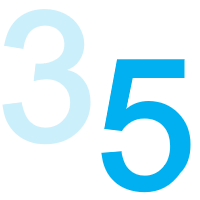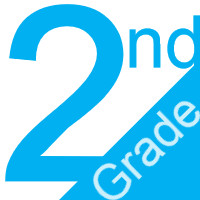2nd Grade English
 Standards Glossaries
Standards Glossaries
| K Grade English | 1st Grade English | 2nd Grade English |
 Standards Glossaries
Standards Glossaries
| 3rd Grade English | 4th Grade English | 5th Grade English |
 Standards Glossaries
Standards Glossaries
| 6th Grade English | 7th Grade English | 8th Grade English |
 Standards Glossaries
Standards Glossaries
| 9th Grade English | 10th Grade English | 11th Grade English | 12th Grade English |
 Standards Glossaries
Standards Glossaries
| HS Journalism | HS Speech |
| Prioritized Standards |
ELA-02.L.02ELA-02.L.02 Demonstrate command of the conventions of standard English capitalization, punctuation, and spelling when writing.Sub-Standards:
Introduce:
a. Use commas in addresses.
b. Use commas and quotation marks in dialogue. c. Use commas and quotation marks to mark direct speech and quotations from a text. d. Use a comma before a coordinating conjunction in a compound sentence. e. Use a comma to separate an introductory element from the rest of a sentence. f. Use a comma to set off the words yes and no (e.g., Yes, thank you), to set off a tag question from the rest of the sentence (e.g., It’s true, isn’t it?) and to indicate direct address (e.g., Is that you, Steve?) g. Use underlining, quotation marks, or italics to indicate titles of works.
Practice:
h. Use commas in greetings and closings of letters.
i. Use an apostrophe to form contractions and frequently occurring possessives. j. Generalize learned spelling patterns when writing words (e.g., cage → badge; boy → boil). k. Form and use possessives. l. Use conventional spelling for high-frequency and other studied words. m. Add prefixes and suffixes to base words (e.g., sitting, smiled, cries, happiness). n. Use punctuation to separate items in a series. o. Spell grade-appropriate words correctly, consulting references as needed and/or using spelling patterns and generalizations. (e.g., word families,
Display proficiency in:
p. Capitalize dates and names of people.
q. Use end punctuation for sentences. r. Use commas in dates and to separate single words in a series. s. Use conventional spelling for words with common spelling patterns and for frequently occurring irregular words. t. Spell untaught words phonetically, drawing on phonemic awareness and spelling conventions. u. Capitalize holidays, product names, and geographic names. v. Capitalize important words in titles. | |
ELA-02.RFNarrative for Reading Foundations Strand:The Foundational Skill standards are directed toward fostering students' understanding and working knowledge of: Phonics and Word Study: The relationship between letters and sounds in language. Students will learn to recognize high-frequency words automatically. Students will also practice recognizing words with irregular spellings (sometimes referred to as sight words). Fluency: The ability to read smoothly and expressively. A fluent reader is one who reads and understands what he or she is reading. Fluency skills should increase as learners progress from beginning to advanced.
The foundational skills standards are not meant to be taught as isolated skills. These standards are necessary and important components of an effective, comprehensive reading program designed to develop proficient readers with the ability to comprehend what is read across a range of text types and content areas (social studies, science).
How to help your child at home with the foundational skill strand:
Resources
Calculation Method for StrandsStrands are larger groups of related standards. The Strand Grade is a calculation of all the related standards. Click on the standard name below each strand to access the learning targets and proficiency scales for each strand's related standards. | |
ELA-02.RF.03
ELA-02.RF.03 Know and apply grade-level phonics and word analysis skills in decoding words.Sub-Standards:
a. Distinguish long and short vowels when reading regularly spelled one-syllable words
b. Know spelling-sound correspondences for additional common vowel teams c. Decode regularly spelled two-syllable words with long vowels
d. Decode words with common prefixes and suffixes
e. Identify words with inconsistent but common spelling-sound correspondences f. Recognize and read grade-appropriate irregularly spelled words | |
ELA-02.RF.04ELA-02.RF.04 Read with sufficient accuracy and fluency to support comprehension. Read grade level text with purpose and understanding.Sub-Standards:
a. Read grade level text with purpose and understanding.
b. Read grade level text orally with accuracy, appropriate rate, and expression on successive readings.
c. Use context to confirm or self-correct word recognition and understanding, rereading as necessary.
| |
ELA-02.RINarrative for Informational Reading Strand:The primary purpose of informational text (non-fiction) is to inform the reader about the natural or social world. Different from literaure (fiction), informational text does not utilize characters. In this strand students are expected to determine the topic (who or what the text is about). Students will also ask and answer questions about the topic of the text and retell details from informational text they hear. Informational text offers a variety of structures to assist the readers in finding information quickly and efficiently. These might include a table of contents, bold or italicized text, gloassaries, embedded definitions for specialized vocabulary, realistic illustrations of photos, captions and other labels, and graphs and charts. Continued work on reading comprehension standards will heighten student abilities to read more complex informational (nonfiction) text. Teachers use assessment and observation to determine if students are ready to progress to more challenging reading selections. Each child is unique, so be flexible, and trust your judgment as you assist your child. Together teachers and parents can help students make better choices when selecting books to read. Not all selections children read must be in the level suggested by assessment, these levels serve as a guideline. Sometimes high interest in a topic allows success in a more difficult text, and sometimes simple text is more inviting to our children, balance is important. Increasing the frequency of reading is the highest predictor of success at any grade level. Building a child’s confidence, through successful experiences with reading, will encourage that desire to read more. Developing successful, life-long readers is our ultimate goal. How to Help Your Child At Home with the Informational Text Strand:
Resources
Calculation Method for StrandsStrands are larger groups of related standards. The Strand Grade is a calculation of all the related standards. Click on the standard name below each strand to access the learning targets and proficiency scales for each strand's related standards. | |
ELA-02.RI.01 | |
ELA-02.RI.02 | |
ELA-02.RLNarrative for Literature Strand:Reading literature (fiction) allows students to learn about other lives and times that relate to their own personal experiences. In this strand, students will ask and answer questions about key details (characters, setting, plot), along with retelling what they have read. Literature (fiction) helps readers learn important life lessons through the lives of the characters, comparing their own experiences with the experiences of the characters they read about. Reading literature (fiction) allows us to learn to appreciate the beauty of the language, and to be articulate speakers and writers. Continued work on reading comprehension standards will heighten student abilities to read more complex literature (fiction) text. Teachers use assessment and observation to determine if students are ready to progress to more challenging reading selections. Each child is unique, so be flexible, and trust your judgment as you assist your child. Together teachers and parents can help students make better choices when selecting books to read. Not all selections children read must be in the level suggested by assessment, these levels serve as a guideline. Sometimes high interest in a topic allows success in a more difficult text, and sometimes simple text is more inviting to our children, balance is important. Increasing the frequency of reading is the highest predictor of success at any grade level. Building a child’s confidence, through successful experiences with reading, will encourage that desire to read more. Developing successful, life-long readers is our ultimate goal. How to Help Your Child At Home with the Literature Strand:
Resources:
Calculation Method for StrandsStrands are larger groups of related standards. The Strand Grade is a calculation of all the related standards. Click on the standard name below each strand to access the learning targets and proficiency scales for each strand's related standards. | |
ELA-02.RL.01 | |
ELA-02.RL.02
ELA-02.RL.02 Recount stories from a variety of genres and diverse cultures, and determine their central message, lesson, or moral. Central message = can be theme, a moral, or a specific kind of lesson to be learned.. | |
ELA-02.SLNarrative for the Speaking and Listening StrandSpeaking and listening standards require students to develop a range of oral communication and interpersonal skills that facilitate various types of discussion and oral exchange. Students must learn to work together, express and listen carefully to ideas, and integrate information from various sources, (e.g., oral, visual, quantitative, and media). Students must also gain skills in evaluating what they hear, use various sources to support what they are communicating, and adapt their speech to the content and the task at hand.
How to help your child with the Speaking and Listening Standards:
Resources
Calculation Method for StrandsStrands are larger groups of related standards. The Strand Grade is a calculation of all the related standards. Click on the standard name below each strand to access the learning targets and proficiency scales for each strand's related standards. | |
ELA-02.SL.01
ELA-02.SL.01 Participate in collaborative conversations with diverse partners about grade 2 topics and texts with peers and adults in small and larger groups.
a. Follow agreed upon rules for discussions (e.g., gaining the floor in respectful ways, listening to others with care, speaking one at a time about the topics and texts under discussion).
b. Build on others’ talk in conversations by linking their comments to the remarks of others. c. Ask for clarification and further explanation as needed about the topics and texts under discussion. | |
ELA-02.WNarrative for the Writing StrandThe standards in this strand include three kinds of writing: opinion, informative, and narrative. Opinion and informative writing will likely start with kids reading one or more books and responding to what they’ve learned. In an opinion piece, your child introduces the book or topic he’s writing about, states his opinion or preference about it, gives a reason or two to support his opinion (e.g. Ramona was wrong because she hurt Susan when she pulled her curls.), and then offers some sort of conclusion to complete his writing. In an informative piece, your child names what he’s writing about and gives some information, facts, or details about it (e.g.Dinosaurs lived on Earth a long time ago. Some dinosaurs were bigger than people are today…), and, as in an opinion piece, offers some sense of conclusion. Writing a narrative is like writing a story, and your child’s story may be inspired by books, experiences, or pure imagination. Your second grader’s story should describe two or more events, include some details about what happened, and use sentence order, verb tense, and words to put the events in order (e.g. Then Goldilocks tries the second bowl of porridge. Next she eats the third bowl of porridge.) and give some sense of the story coming to an end — not only by writing “The End,” . Students learn and apply the rules of standard written English and to strengthen and expand their vocabulary, use of language, and organization of ideas. You will find the standards for these skills in the Language Strand.
How can I help my child at home with the writing strand standards?
ResourcesCalculation Method for StrandsStrands are larger groups of related standards. The Strand Grade is a calculation of all the related standards. Click on the standard name below each strand to access the learning targets and proficiency scales for each strand's related standards. | |
ELA-02.W.01ELA-02.W.01 Write opinion pieces in which they introduce the topic or book they are writing about, state an opinion, supply reasons that support the opinion, use linking words to connect opinion and reasons, and provide a concluding statement or section.Sub-Standards:
a. Introduce the topic or book they are writing about
b. State an opinion. c. Supply reasons for the opinion.
d. Use linking words (e.g., because, and, also) to connect opinion and reasons
e. Provide a concluding statement or section | |
ELA-02.W.02ELA-02.W.02 Write informative/explanatory texts in which they introduce a topic, use facts and definitions to develop points, and provide a concluding statement or section.Sub-Standards:
a. Introduce a topic.
b. Use facts and definitions to develop points.
c. Use transitional words when appropriate.
d. Provide a concluding statement or section. | |
ELA-02.W.03ELA-02.W.03 Write narratives in which they recount a well-elaborated event or short sequence of events, include details to describe actions, thoughts, and feelings, use temporal words to signal event order, and provide a sense of closure.Sub-Standards:
a. Recount a well-elaborated event or short sequence of events.
b. Include details to describe actions, thoughts, and feelings.
c. Use transitional words to signal event order.
d. Provide a sense of closure. | |



 Grade 2
Grade 2